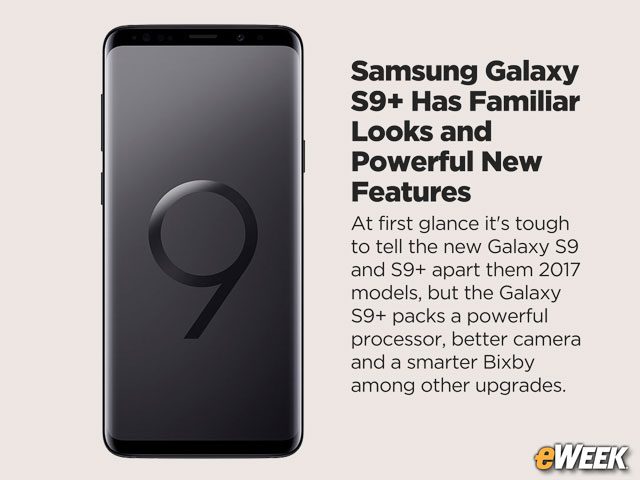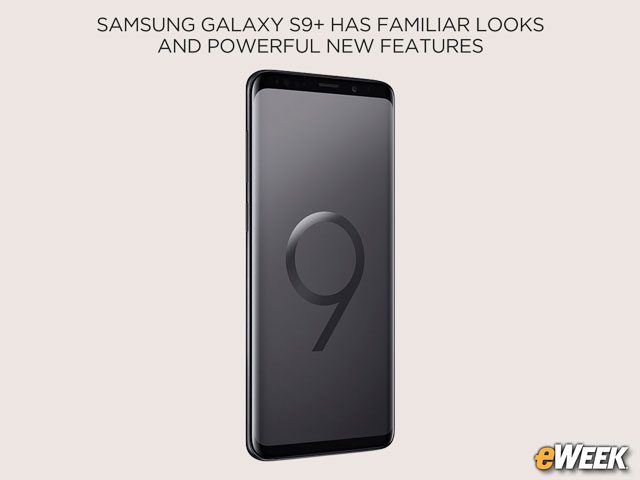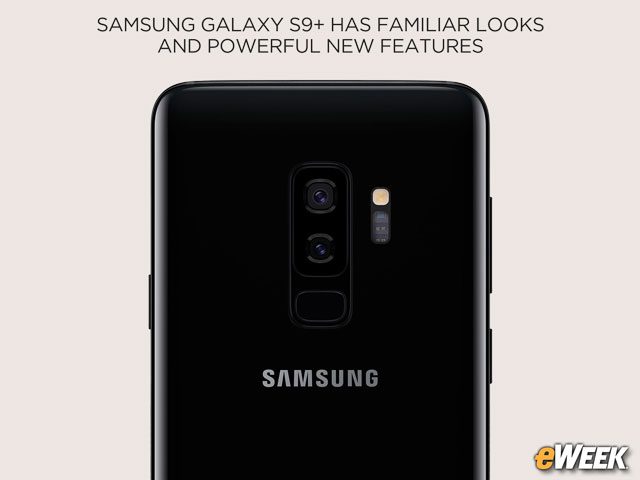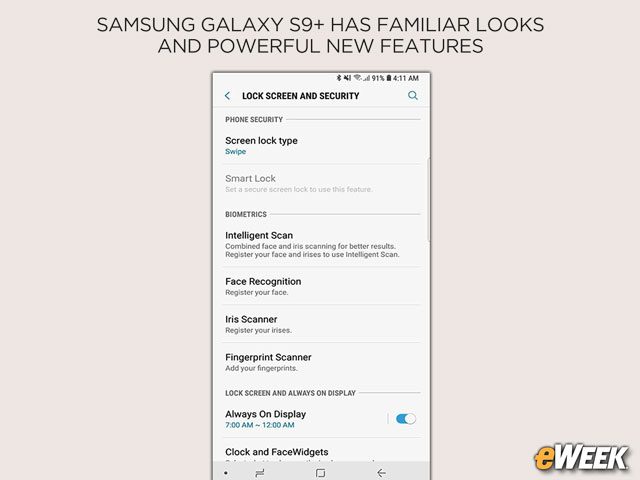eWEEK content and product recommendations are editorially independent. We may make money when you click on links to our partners. Learn More.
1Samsung Galaxy S9+ Has Familiar Looks and Powerful New Features
Another year, another flagship smartphone from Samsung. For 2018, the electronics maker isn’t straying far from the winning design that made the Galaxy S8 and S8+ a best seller. At first glance it’s tough to tell the new Galaxy S9 and S9+ apart from their predecessors. The most noticeable change is the repositioned fingerprint reader, which is now centered along with the rear camera. Other outward refinements are nearly imperceptible, including a slimmer gap between the AMOLED screen and the bezel. Most of the improvements are inside the case including a more useful virtual assistant, better cameras and a powerful Snapdragon 845 processor from Qualcomm that puts a spring in Android’s step. Here’s a look at what the new Galaxy S9+ has in store.
2Little Design Changes Add Up
The Galaxy S9+ may not be much of a departure from last year’s model, but that’s not necessarily a bad thing. The differences, as tiny as they are, add extra polish. For example, the top bezel now does a better job of masking the sensors stowed underneath—except for the front-facing camera, of course—rendering them practically invisible in all but the brightest lighting conditions.
3AMOLED Screen Impresses With Vibrant Colors
4This Handset Is Made for Shutterbugs
5Samsung Responds to Apple’s Animoji
Somewhat following Apple’s lead with Animoji, Samsung Galaxy S9 users can create animated representations of themselves called AR Emoji. Although some may consider it a gimmick—or slightly unnerving, depending on the results—it shows what’s possible using deep learning, 3D modeling and the phone’s sensors.
6New Speaker Pumps Out Bigger Sound
In landscape mode, a new stereo speaker setup is 1.4 times louder than previous models and can produce a simulated surround sound effect powered by Dolby Atmos technology. That said, it can’t beat a good set of headphones. Speaking of which, Samsung is bucking the industry by clinging to the 3.5mm audio connector.
7Snapdragon 845 Delivers Potent Processor
8Bixby Gets Smarter
9Samsung’s Intelligent Scan Works Fast—Usually
Samsung’s answer to Apple’s Face ID on the iPhone X is Intelligent Scan. This feature uses both facial recognition and the device’s iris scanners to unlock a phone and approve actions in supported apps. It works impressively fast most of the time. It’s much faster than entering a PIN, but it did generate a “No face has been detected” error and a glare warning on occasion.








